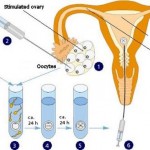Christopher M is a happy contented 22-year-old man. He functions at a 2-year-old level, requires 24/7 supervision, has multiple medical problems, Brain, lungs, GI tract, Heart, Muscles. His medical costs to date are over $2 million dollars and education and other support over $1 million. Christopher M has congenital myotonic dystrophy a neuromuscular disease with no cure, no treatment except symptom relief. This congenital form is caused by the conception and birth or a child to a mother who has the adult form of the disease. Whats has even more impact is that each generation with myotonic dystrophy the children get sicker and have more and more severe symptoms.
 Both the these diseases DM1 and the congenital form of the disease (CMD) can be prevented by using Pre-Implant Genetics (PGD) along with in vitro fertilization (IVF) for those who wish to have a health child. Myotonic Dystrophy is preventable in most cases, except where religious belief would interfere with IVF.
Both the these diseases DM1 and the congenital form of the disease (CMD) can be prevented by using Pre-Implant Genetics (PGD) along with in vitro fertilization (IVF) for those who wish to have a health child. Myotonic Dystrophy is preventable in most cases, except where religious belief would interfere with IVF.


